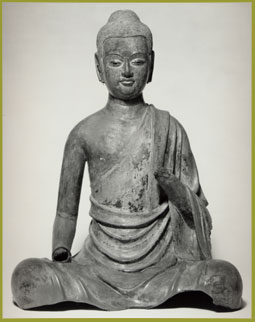|
|
|
|
|
Styles in Chinese Buddhist art cycled between borrowing from foreign traditions and promotion of native aesthetics. Periodically, waves of influence from India, Central Asia, and Tibet were absorbed and transformed, resulting in a sophisticated interplay of elements. Sensuous modeling of human forms was a foreign-derived feature that was tempered by the traditional Chinese preference for linear expression and flowing, rhythmic lines. The aloof grace and lean proportions of a Sui dynasty (581–618) Buddha image, whose robe features softly modeled folds that hint at the anatomical form beneath, exemplifies one type of synthesis of Chinese and Indian sensibilities (see figure). The Bodhisattva of Compassion (Guanyin, in Chinese) illustrated on the next page reveals an even more overt reliance on Indian tradition in its sensuously modeled form. next page
|
 |
|
The Arthur M. Sackler Gallery and the Freer Gallery of Art Exhibition List | Online Exhibitions
All presented material is copyright © Smithsonian Institution, 2008 except where otherwise noted. |